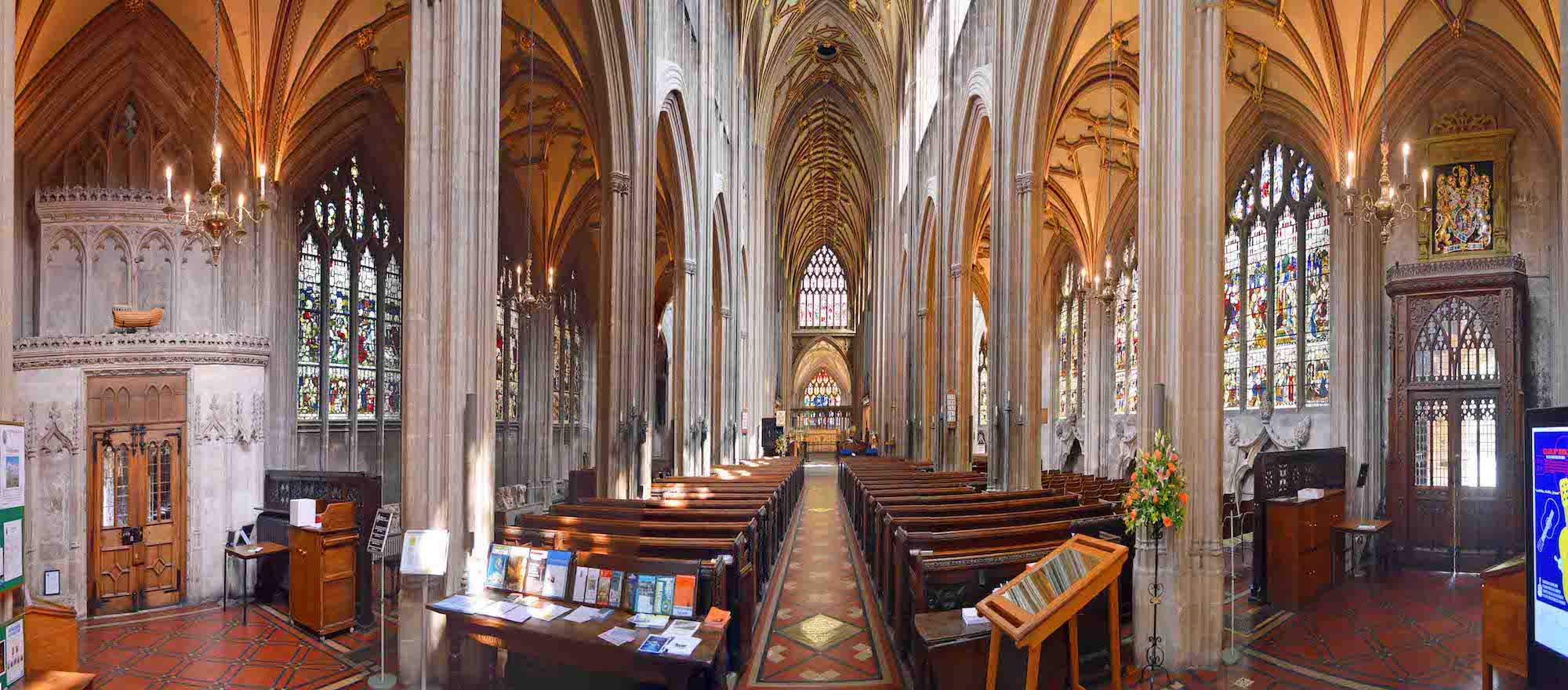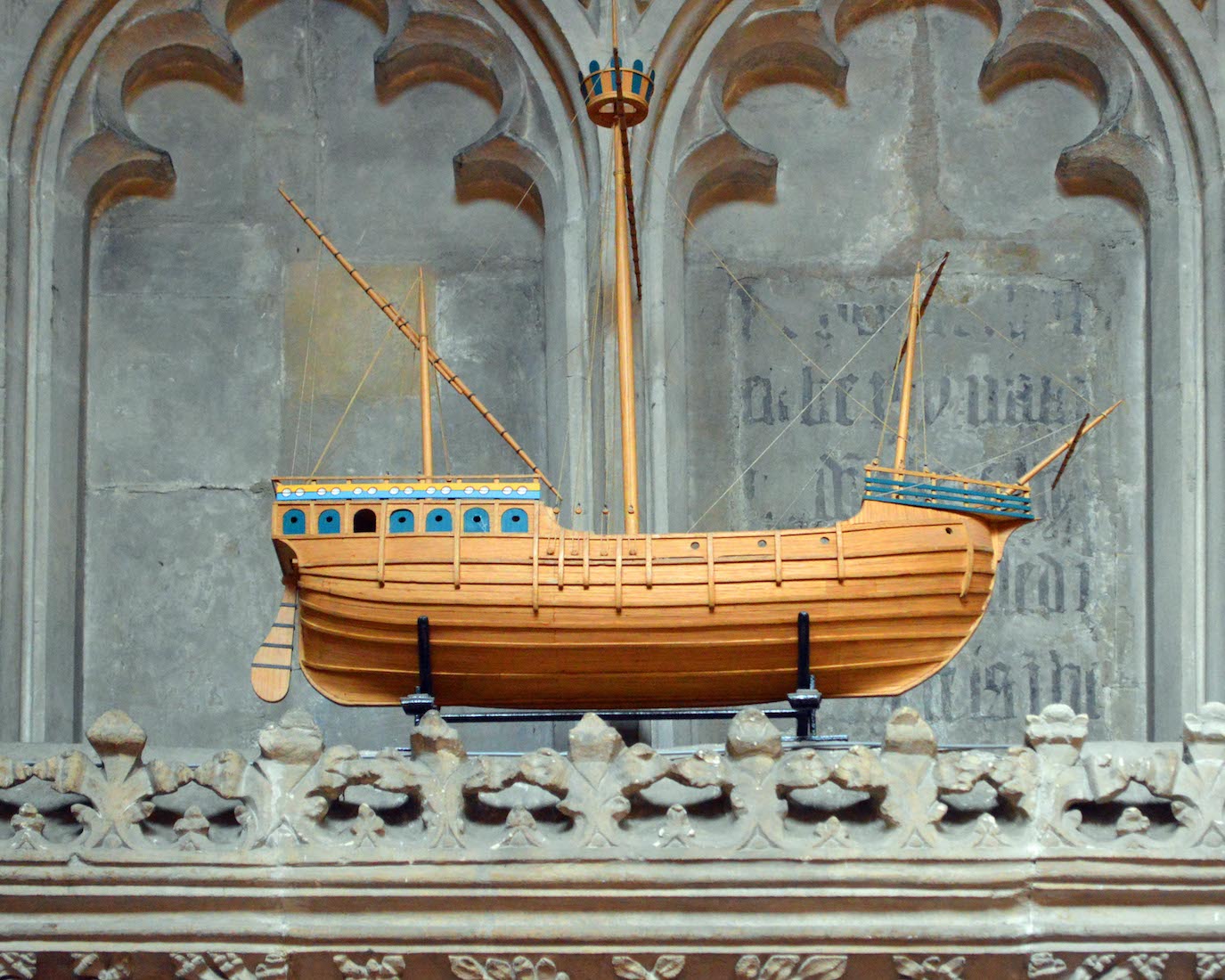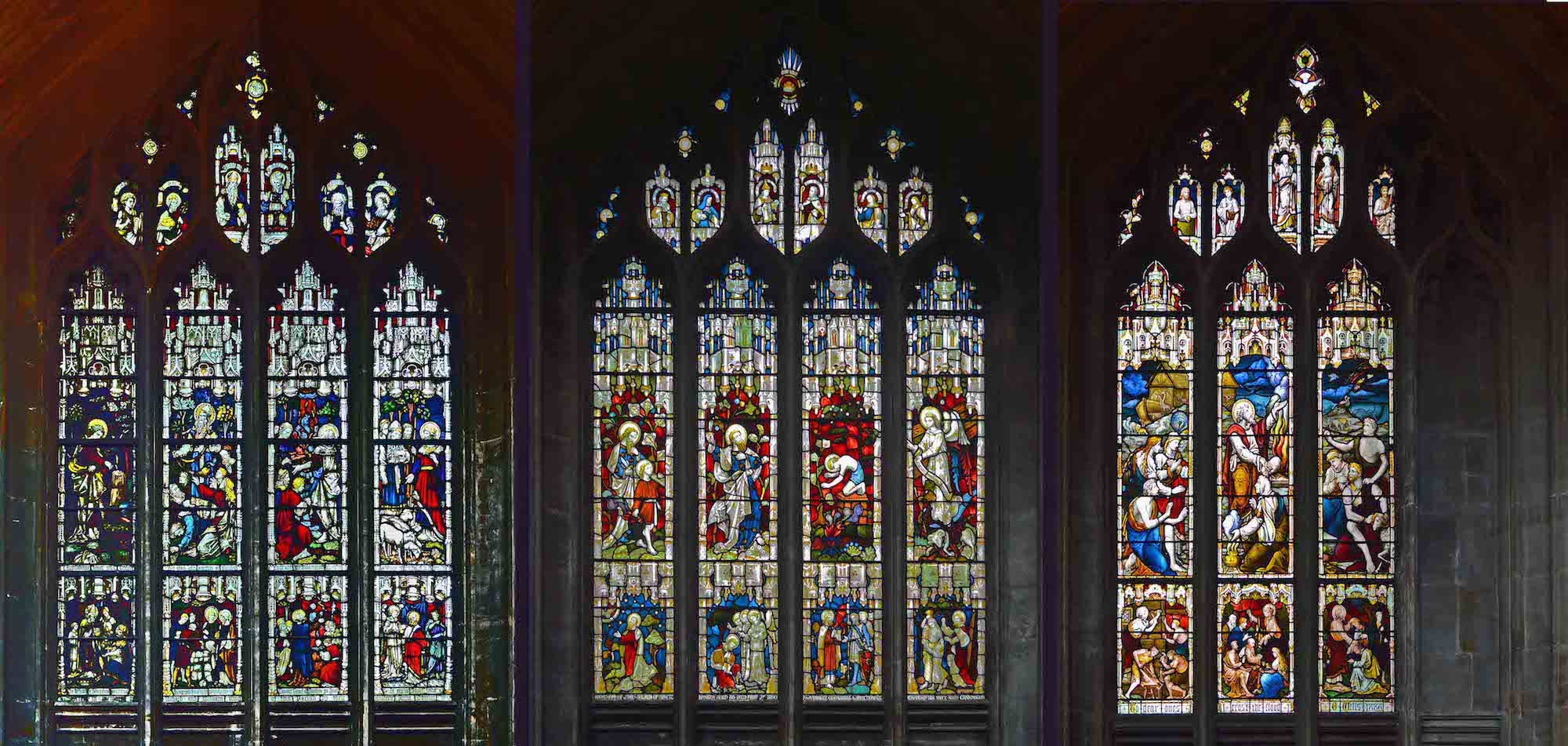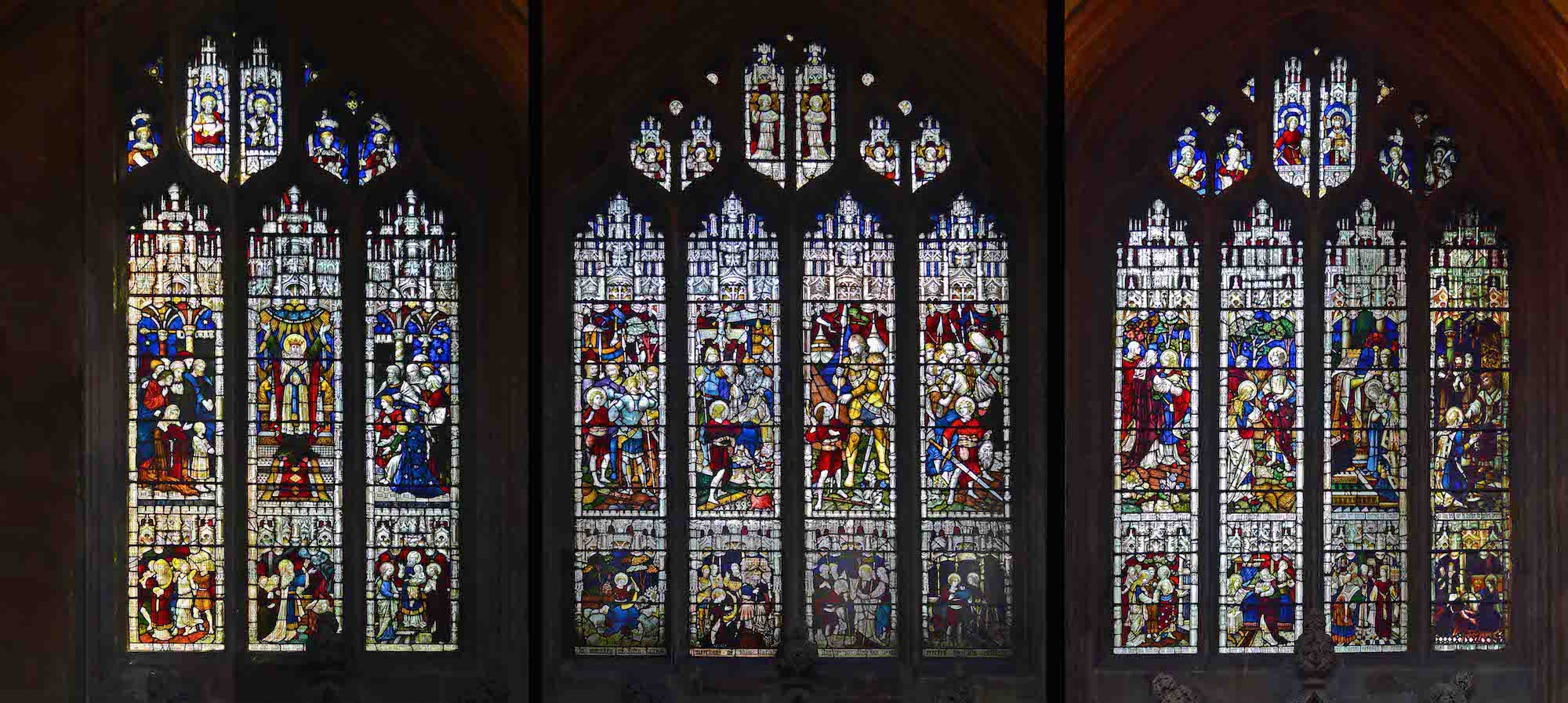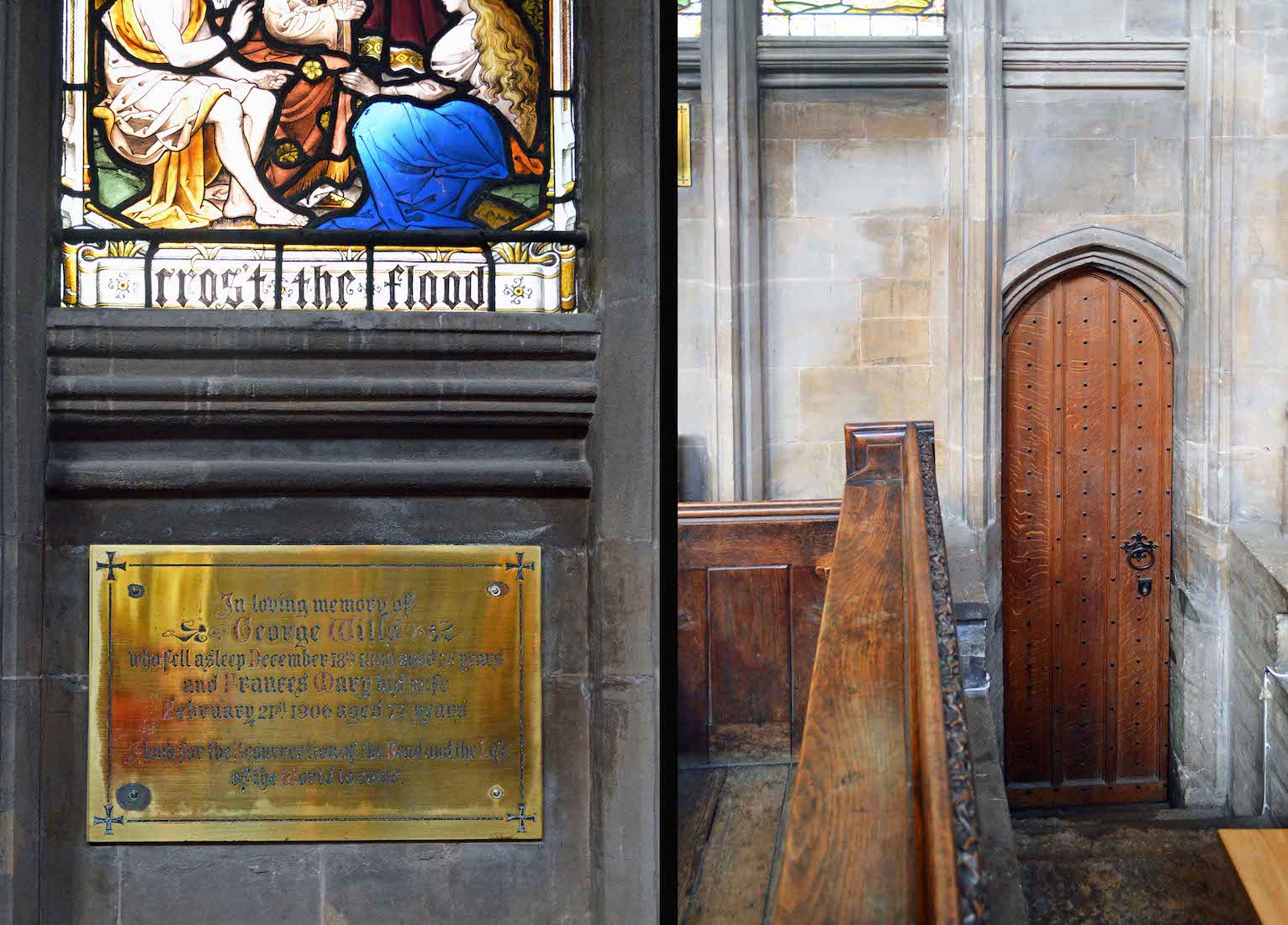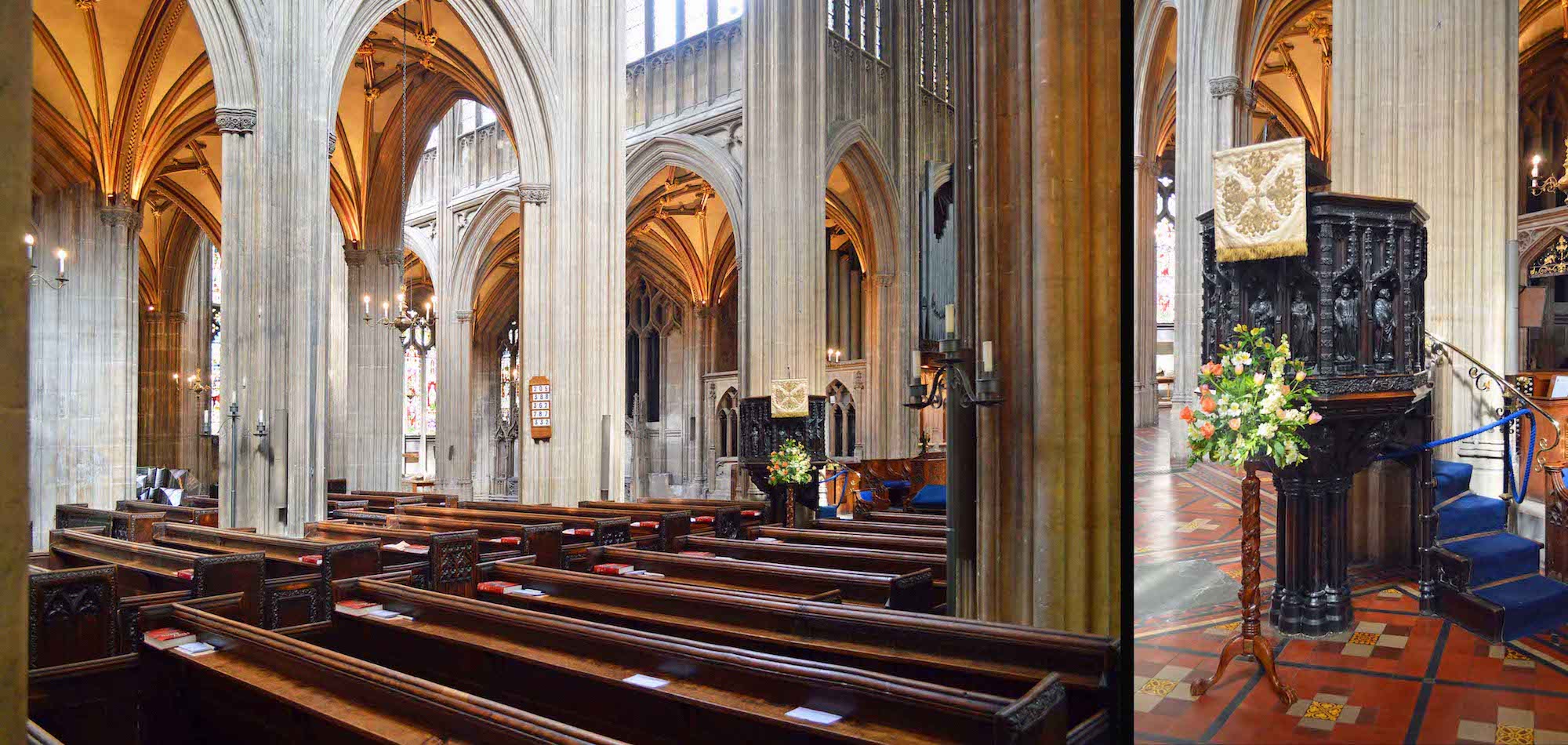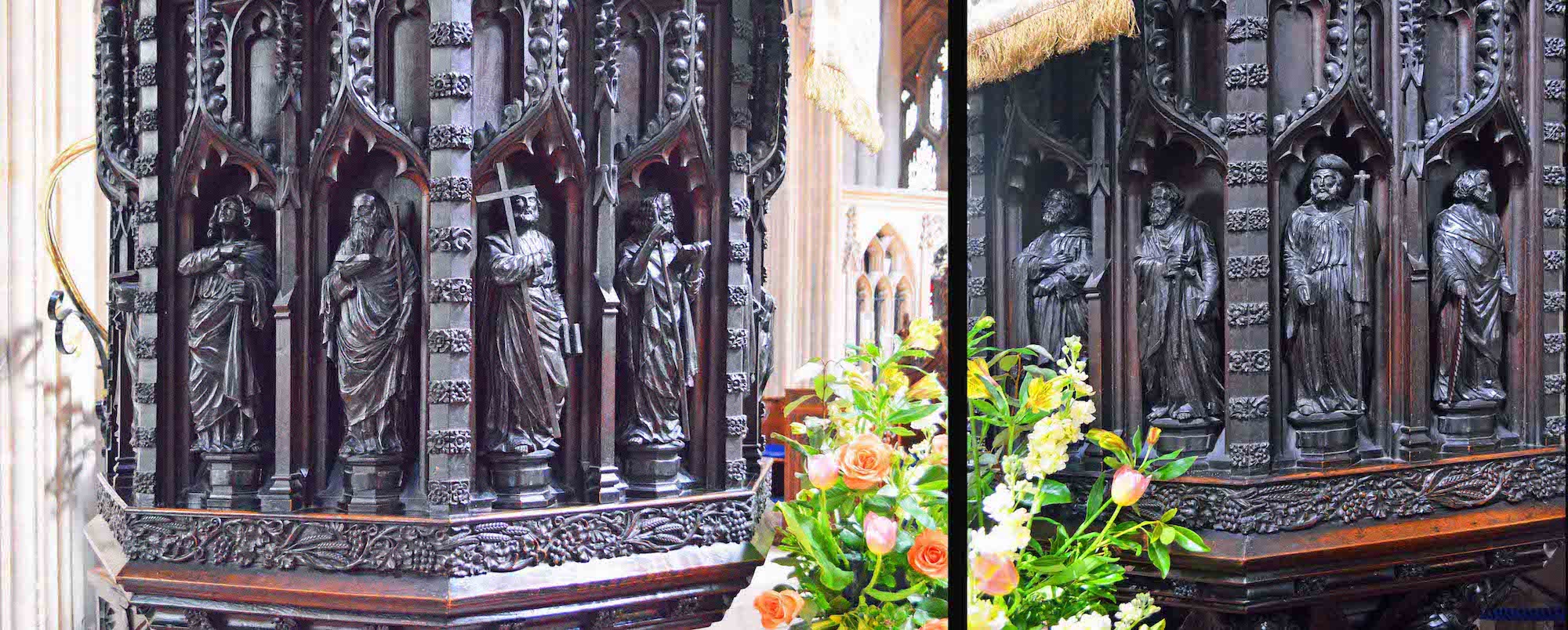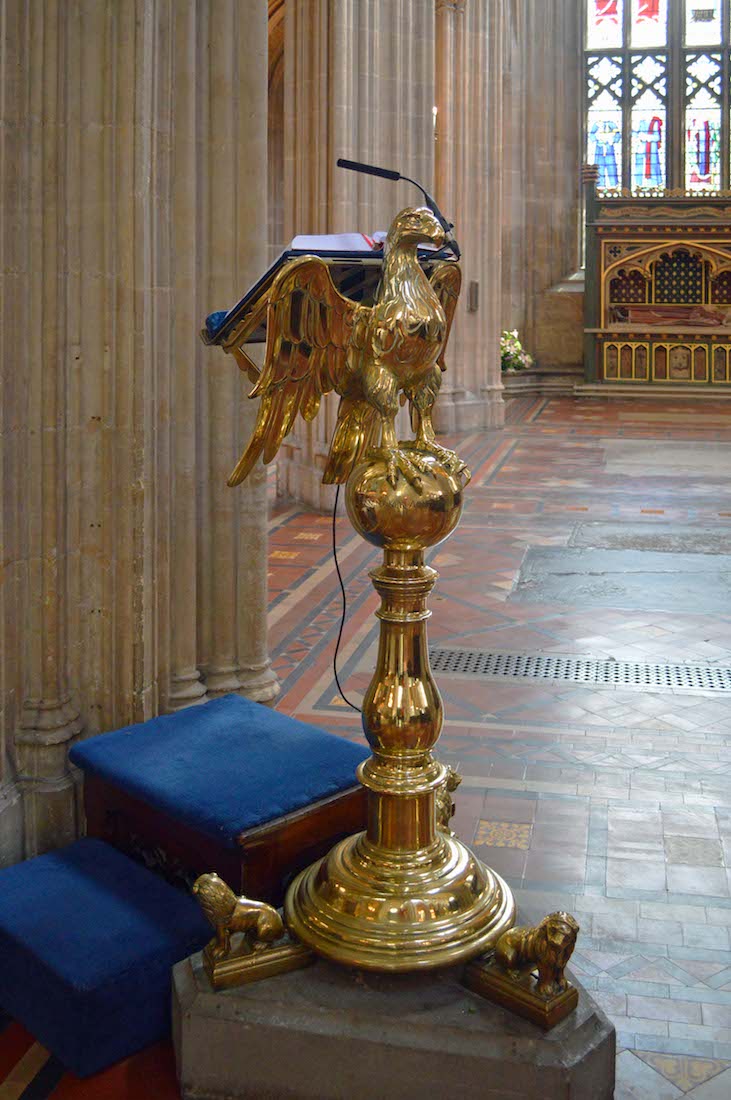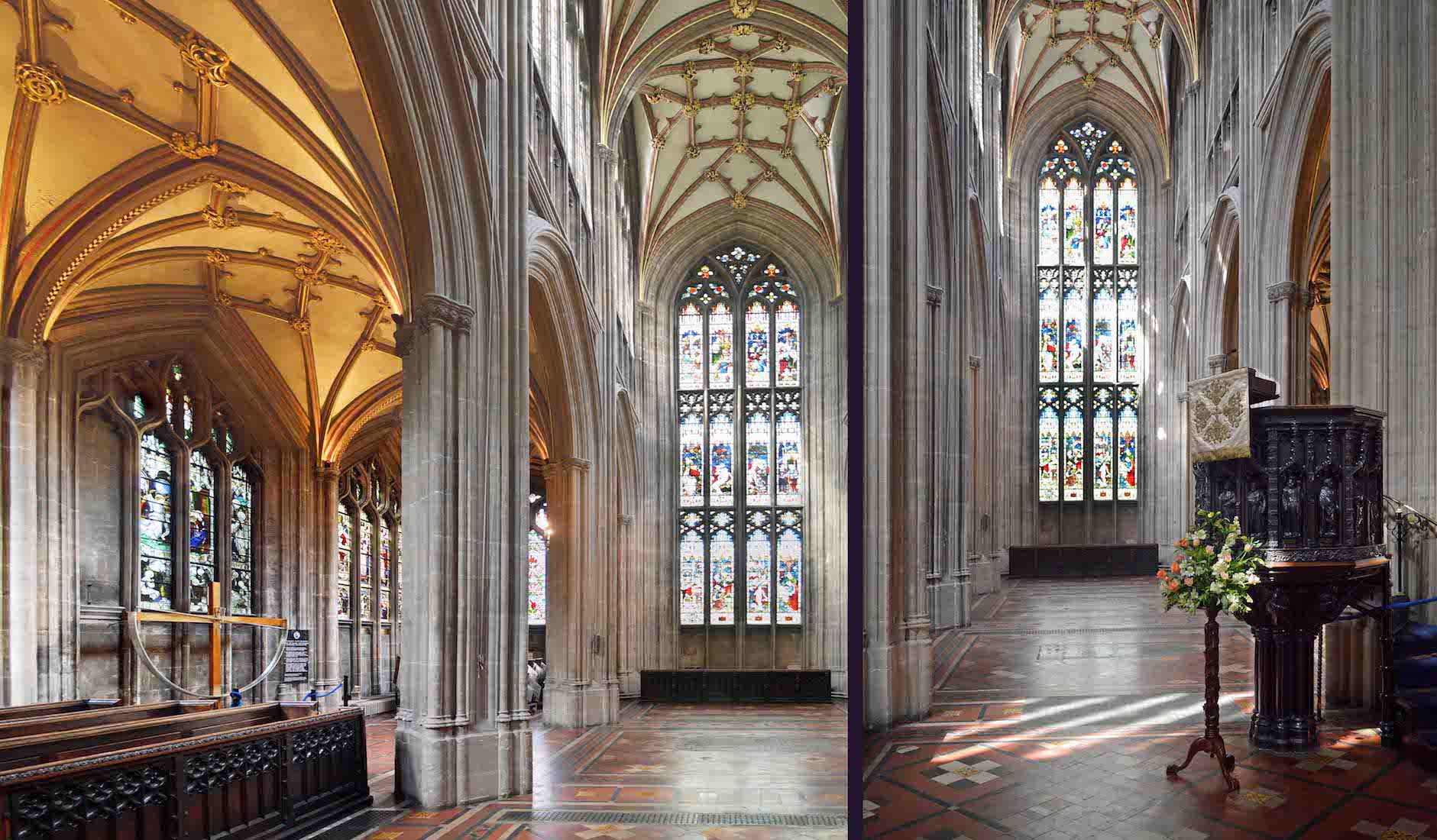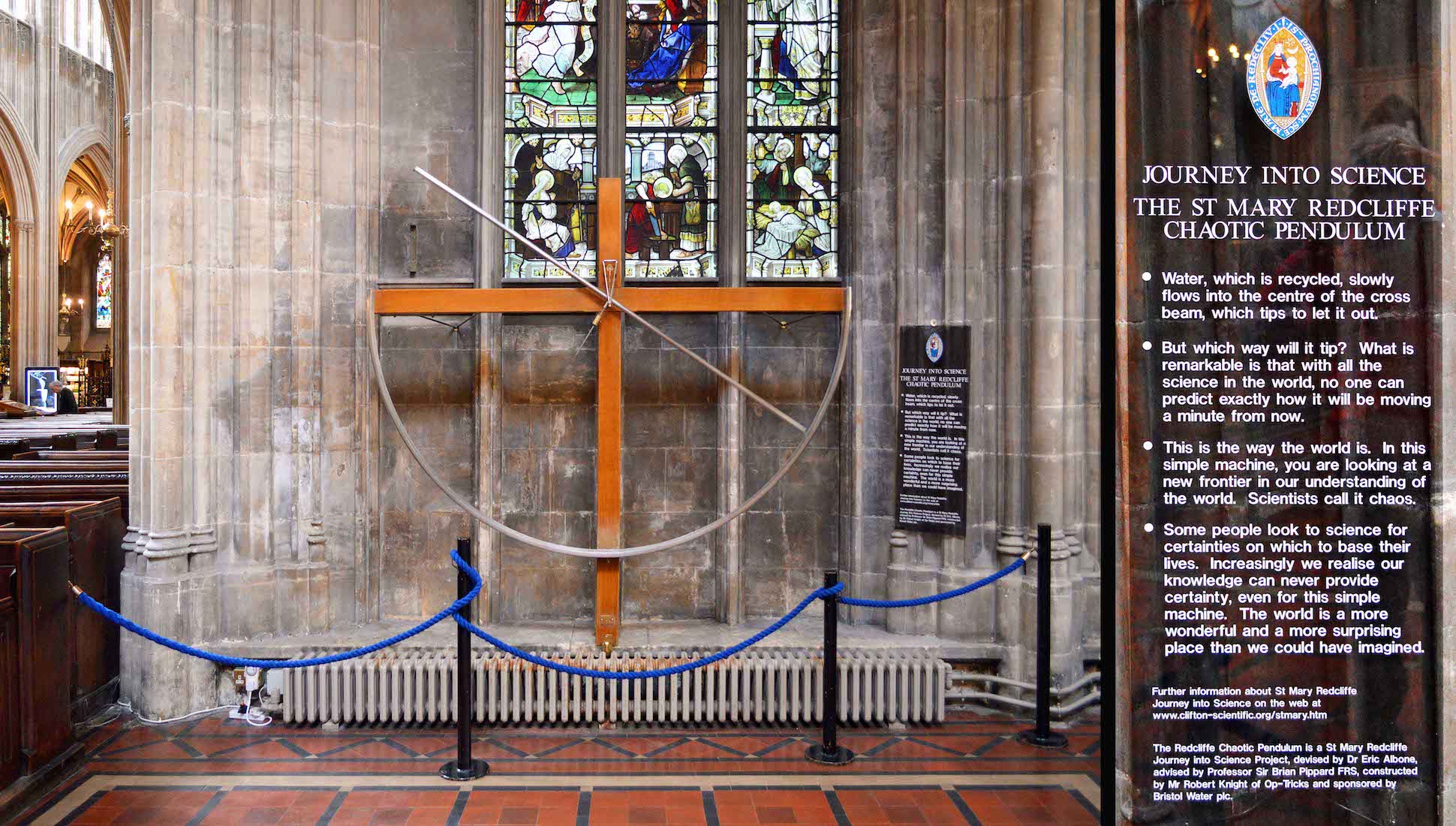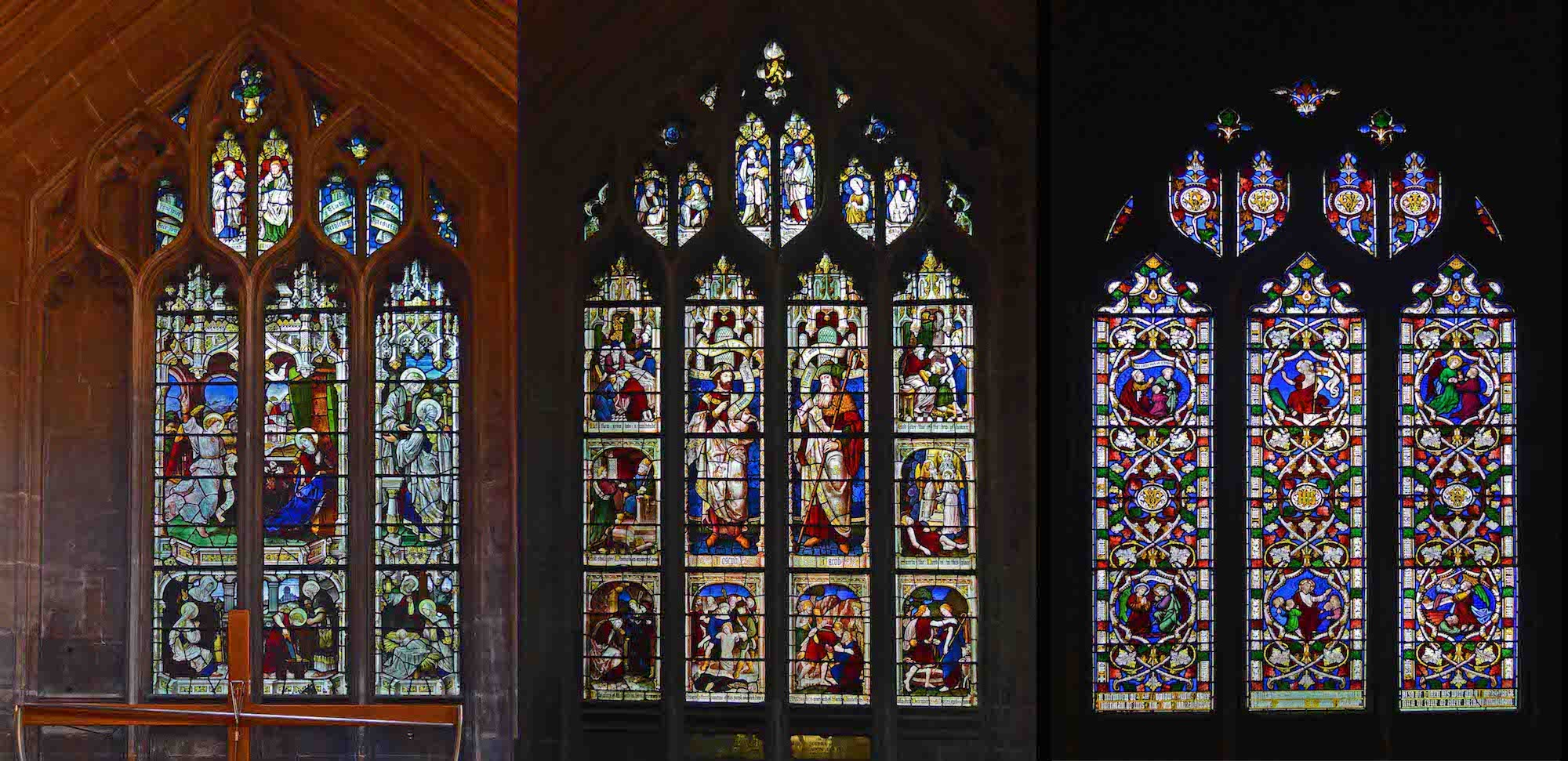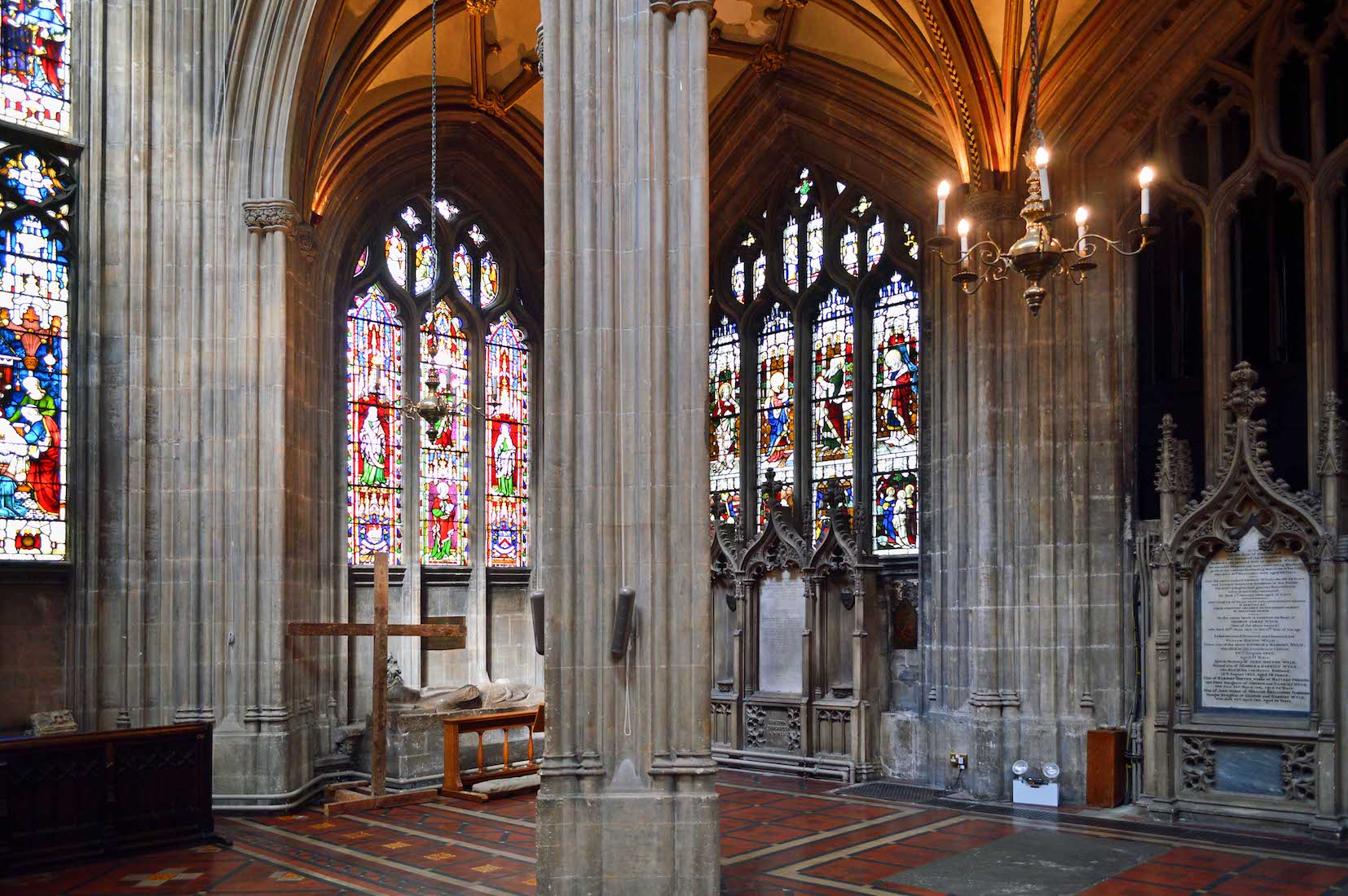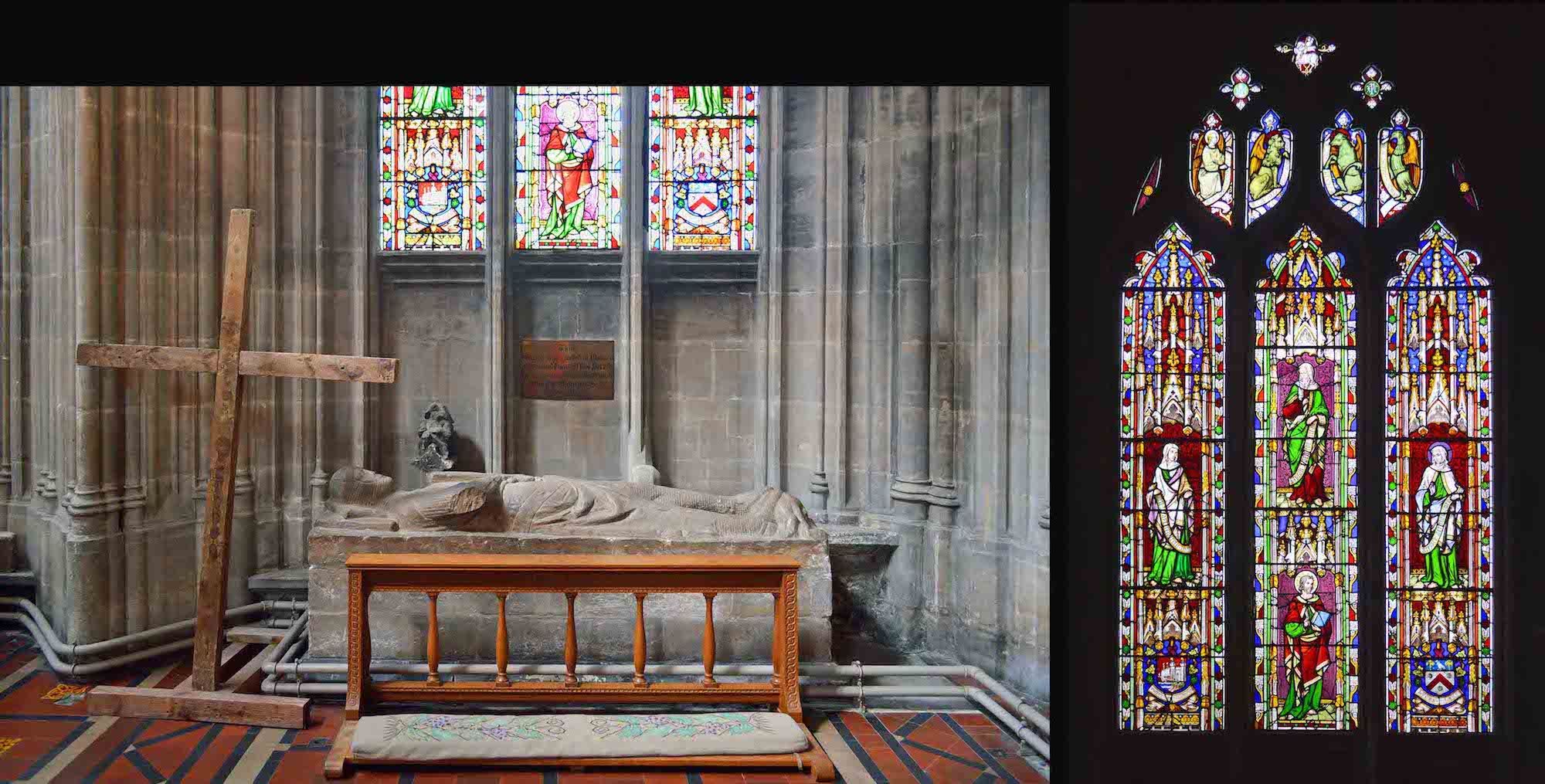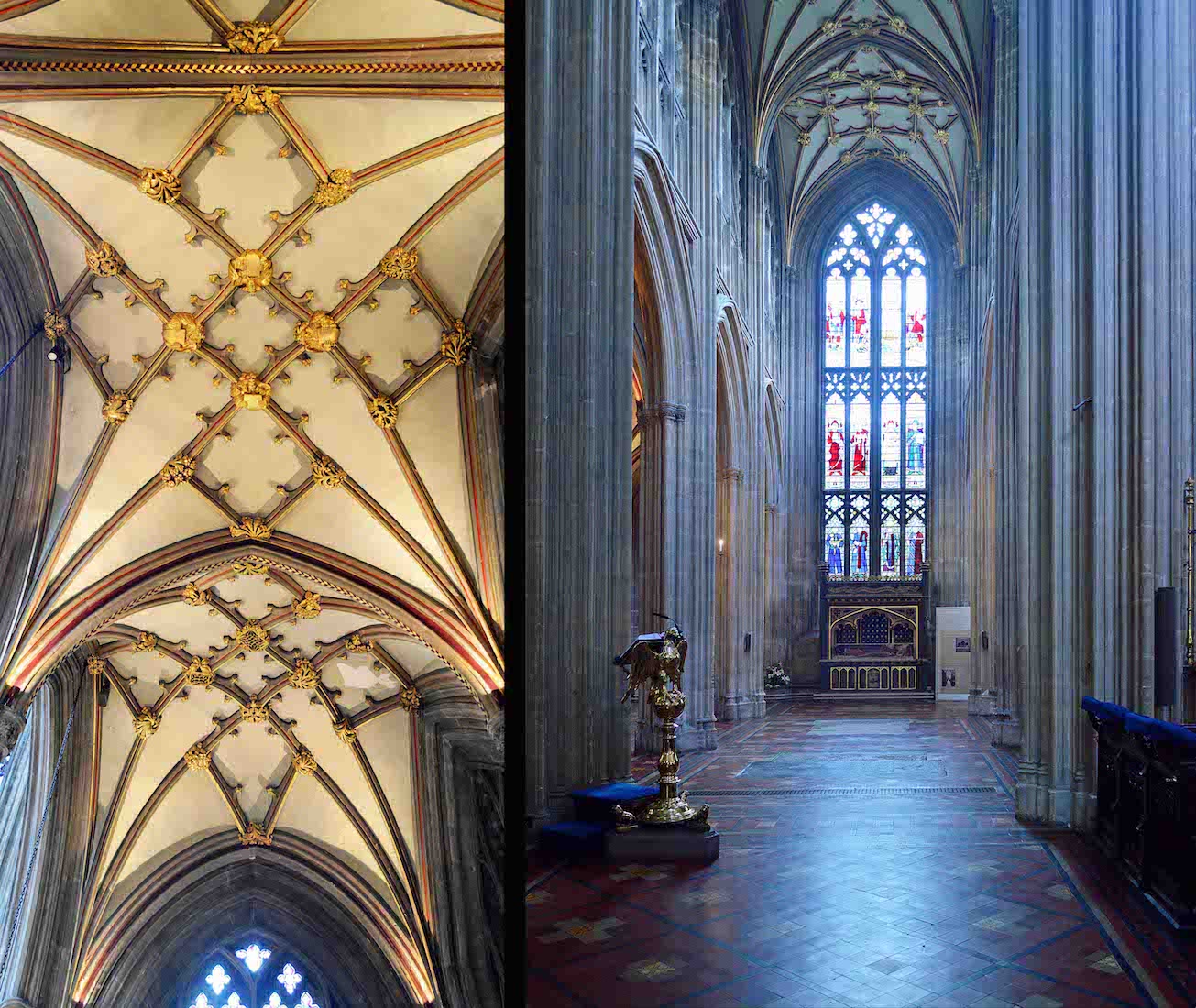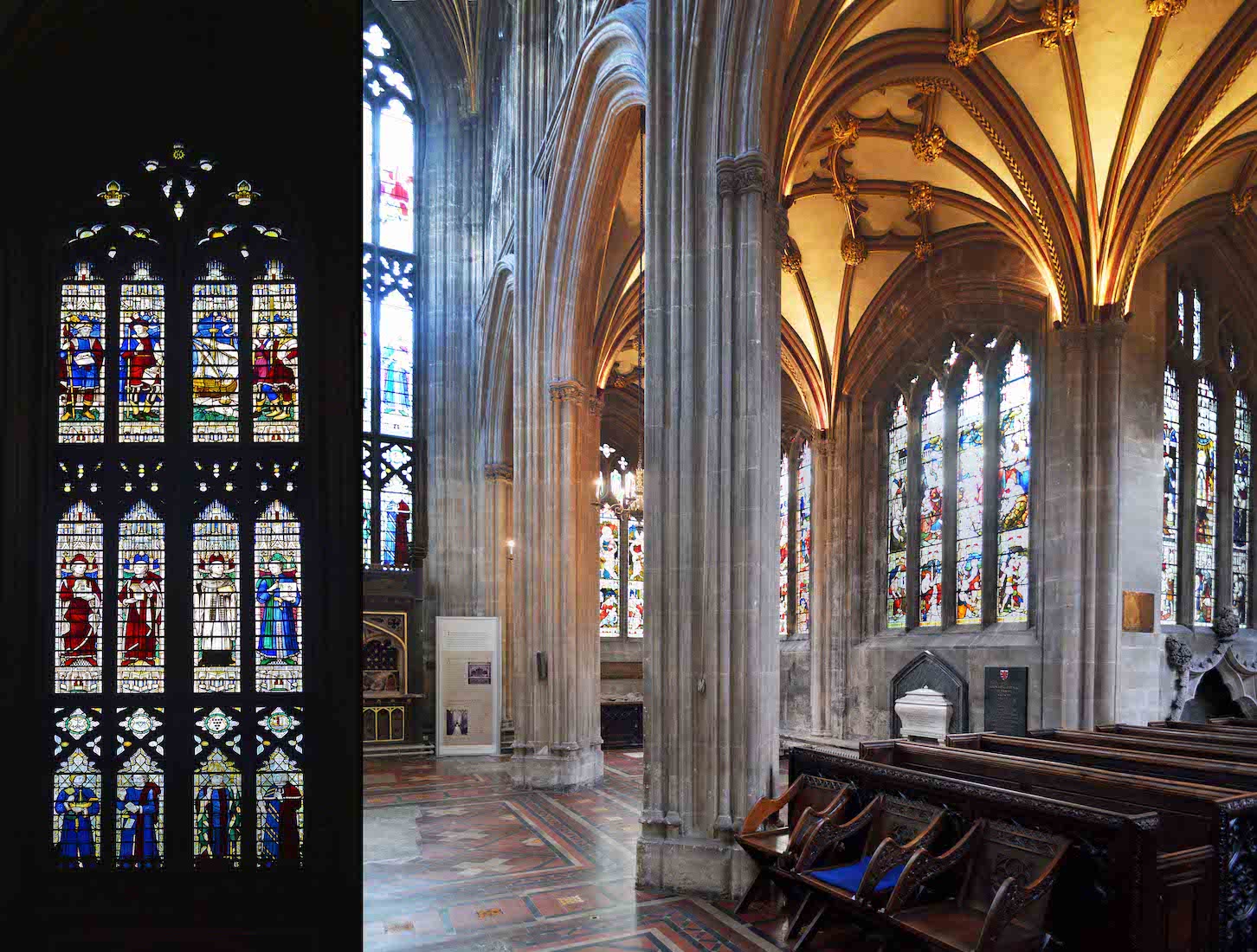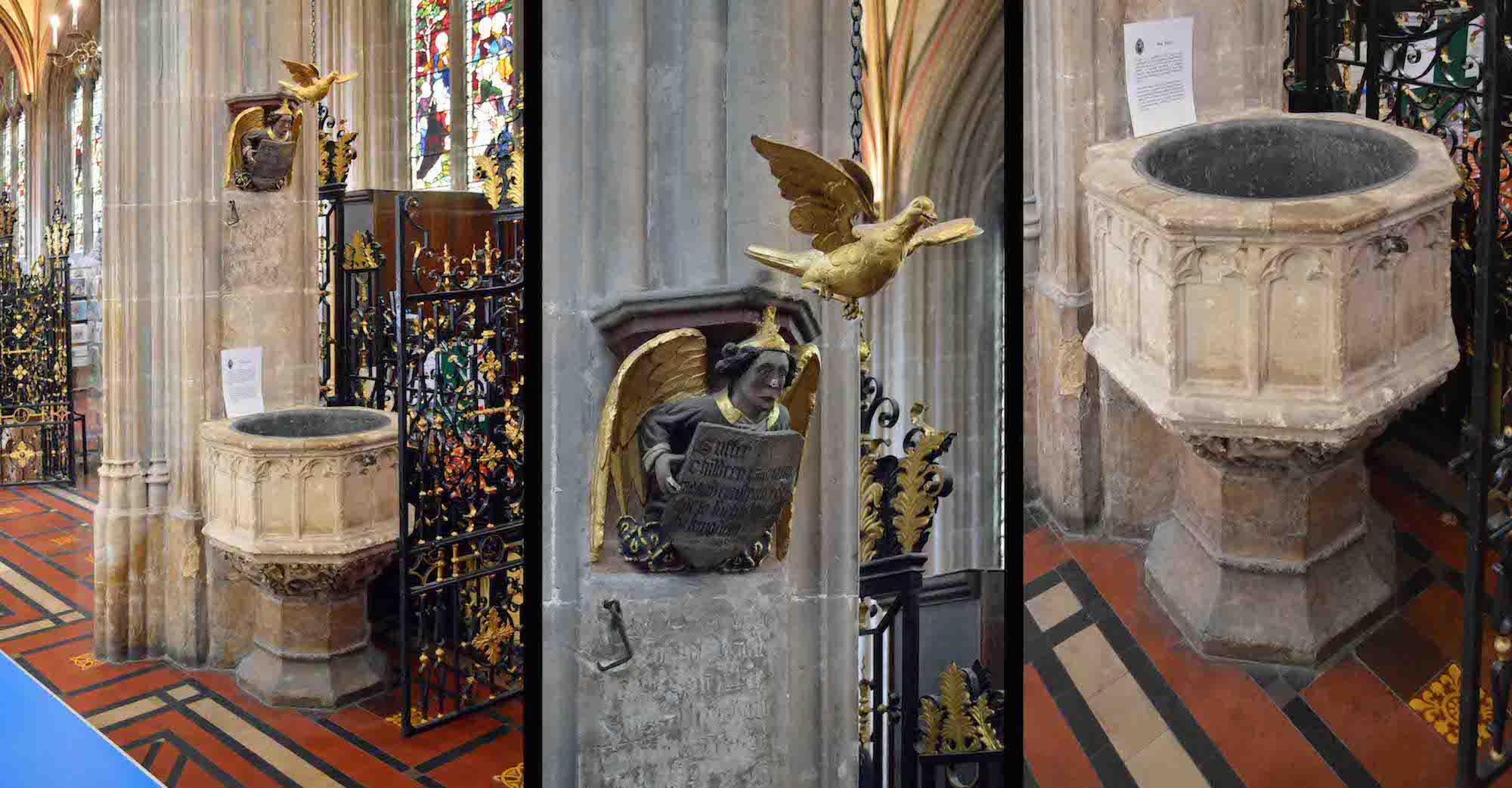
The marble font at the base of this column was made by William Paty in 1755. The angel on the column carries a text based on Matthew 19:14 : ‘But Jesus said, Suffer little children, and forbid them not, to come unto me: for of such is the kingdom of heaven.’ (KJV). Suspended over the font is a gilt dove which originally hung under the sounding board of the old pulpit. PLAN
22. SHOP WINDOWS
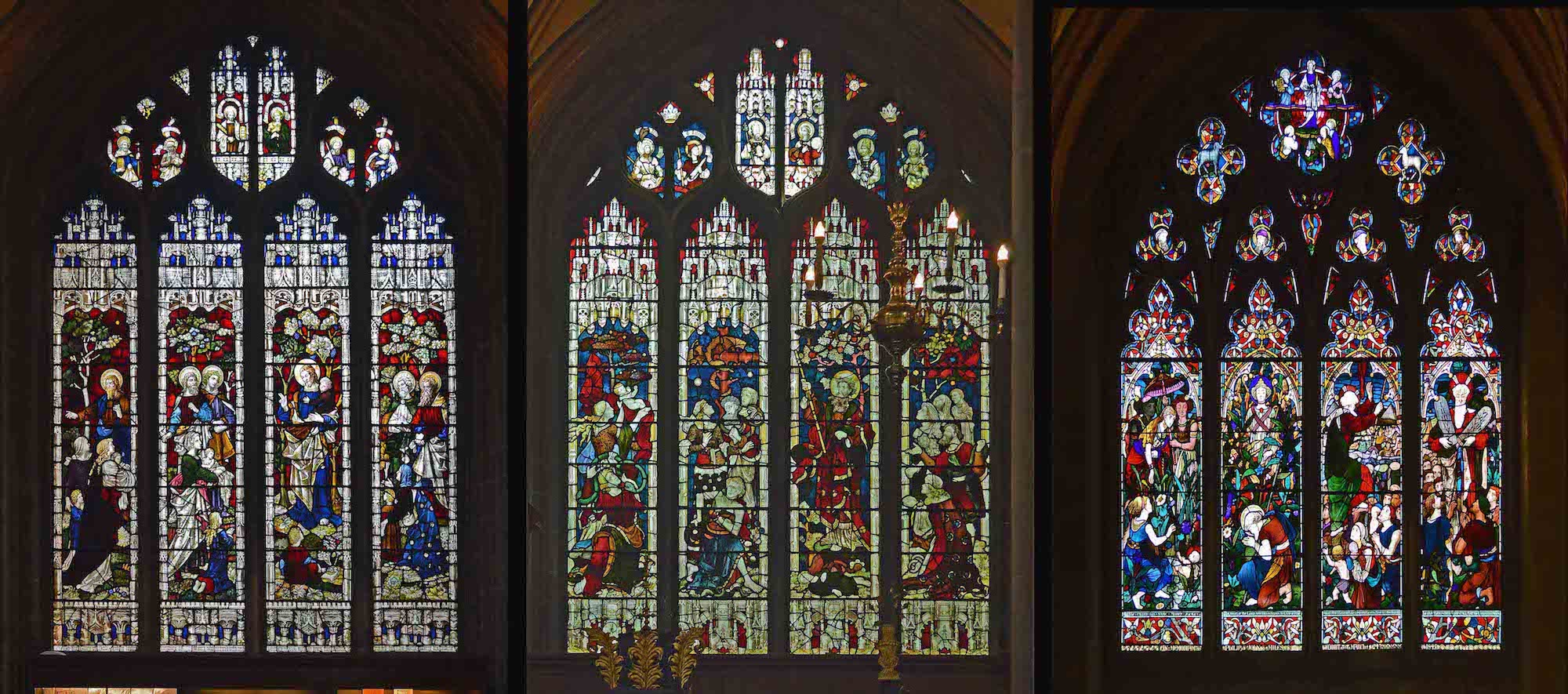
Pictured are the two Southern windows (left) and the West window (right) in the shop area. The windows from left show (?!) : • Jesus with his disciples teaching the crowds; • unknown; • the story of Moses from his birth until his descent from the mountain with the Ten Commandments.
23. NAVE
We return to the centre of the Church and look down the glorious nave. At left and right are the nave entrances. The rows of white columns supporting the Gothic arches rise up tall, straight and narrow. Around the sides there is a blaze of colour from the many stained glass windows. And above us the golden lierne vaulting with its extra ribbing and many gold bosses. This is a wonderful place! Over the door at right are the Royal Arms placed in the Church in the reign of Charles II.
24. NAVE VAULTING
The vaulting here is an example of ‘lierne’ vaultng – a word which comes from the French ‘lier’ - to bind. This vaulting contains extra ribbing, leading to a more decorated ceiling. All the ribs here are painted and decorated in colour. There is also a great variety of golden bosses.
25. NORTH ENTRY BOAT
Over the North entry is a model of ‘The Matthew’, a caravel sailed by John Cabot in 1497 from Bristol to North America, presumably Newfoundland. The Matthew was a small ship (50 tons), but fast and able with a crew of 18. It departed in May 1497. Cabot sailed west from Ireland expecting to reach Asia, but he landed in North America in June 1497. Cabot went ashore to take possession of the land, and explored the coast for some time, probably departing on 20 July. On 6 August he arrived back in Bristol.
26. NORTH NAVE WINDOWS
There are three windows on the North side of the nave, the right-hand one partly blocked by the North transept. From left the windows depict: • unknown; • Abraham and the sacrifice of Isaac; • Noah and the ark.
27. SOUTH NAVE WINDOWS
We now cross the nave and investigate the windows on the South side. Again the Easternmost window (left) is partly blocked by the transept. From left the windows depict: • King Solomon and the building of the Temple? ; • Shepherd boy David defeats the giant Goliath ; • Ruth and Naomi; Esther made queen.
28. STONE CARVINGS
Along the base of the North nave wall is a collection of small stone carvings. These are all of similar stone, suggesting they have been rescued from St Mary Redcliffe Church over the years as part of a continuing restoration program.
29. BRASS PLATE AND DOOR
Below the Easternmost window of the North nave is this brass plate in memory of George Wills (died 1888) and his wife Frances Mary (died 1906). To the right of the plaque is one of those intriguing little doors found in old churches and cathedrals: a door which invites investigation!
30. VIEW ACROSS TO THE NORTH TRANSEPT
Standing back in the nave, we look across past the pulpit to the space of the North transept. We notice that the clerestory windows of this transept are of clear glass. The pulpit with figures of the twelve apostles, by Victorian Quaker, William Bennet, of Portishead, was placed in the Church about 1856, when the present oak seats replaced the galleries and high pews.
31. PULPIT DETAIL
Around the pulpit are carvings of the twelve apostles each holding a symbol by which they can be identified. The box pews in the nave are wonderfully carved, as is the pulpit – interestingly, Bennet used fellow Quakers as models for the apostles, and his own children as models for the angels on the pulpit.
32. LECTERN
An old brass eagle lectern, (1638), stands at the crossing of the transepts, where William Wyrcestre tells us there was originally a small lantern tower. It bears an inscription : ‘this is the free guift of James Wathen, Senior, of this parish, pinn maker. Anno Dmni 1638.’ It is said to have been made out of brass used by him for pins. .
34. CHAOTIC PENDULUM
The chaotic pendulum is now a popular permanent feature of the North transept. This chaotic device, driven by a flow of recycled water, is unique and not on display anywhere else. It runs continuously and is an extremely beautiful, non- threatening icon of our modern understanding of the world. It fits well into its medieval setting and is a fascination for young children and professors of physics. Some describe it as mesmeric and healing, others that it contains a deep message about our world which we must ponder; university students are directed to it as part of their studies on chaos.
35. NORTH TRANSEPT SOUTHWEST WINDOWS
These windows in the North transept are the two on the West wall, and the adjacent window on the North wall. They show (from left): • The Annunciation and Visitation, the young Mary and Joseph, and the Nativity; • Scenes from the lives of Joseph and Jacob; • Jesus teaching the children, with angelic beings on either side.
36. NORTH TRANSEPT MAIN WINDOW
The central window in the North Transept is the Colston Memorial Window, representing scenes from the parable of the Good Samaritan, and works of mercy.
37. NORTHEAST CORNER OF THE NORTH TRANSEPT
As we look towards the Northeast corner, we see two more stained glass windows, an effigy and rough cross at left, and further memorials to the right.
38. KNIGHT IN ARMOUR, WINDOW
By the wooden Cross is an altar tomb, with the effigy of a knight in armour. This is the oldest in the Church, probably a memorial to Robert de Berkeley, Lord of Bedminster and Redcliflfe, who died in 1220. The window above (right) is interesting with its bright green colours, but not easy to interpret. At top are the symbols of the Four Evangelists, one of whom might be shown at the bottom. Two of the figures have haloes. The crests at the base may be school crests? There is another window to the right of this one, but it is partly obscured by the memorial in front.
39. TRANSEPTS
From here we can look directly South to the main South transept window. More of the decorative lierne vaulting can be seen here.
40. SOUTH TRANSEPT
The South Transept is the oldest part of the 14th century Church. The main window (left) shows both the William Canynges, as well as John Cabot and his ship ‘The Matthew’. The Western part of the transept shows more colourful stained glass in three further windows, and elaborately decorated vaulting. There is also the glimpse of an effigy against the far wall.


